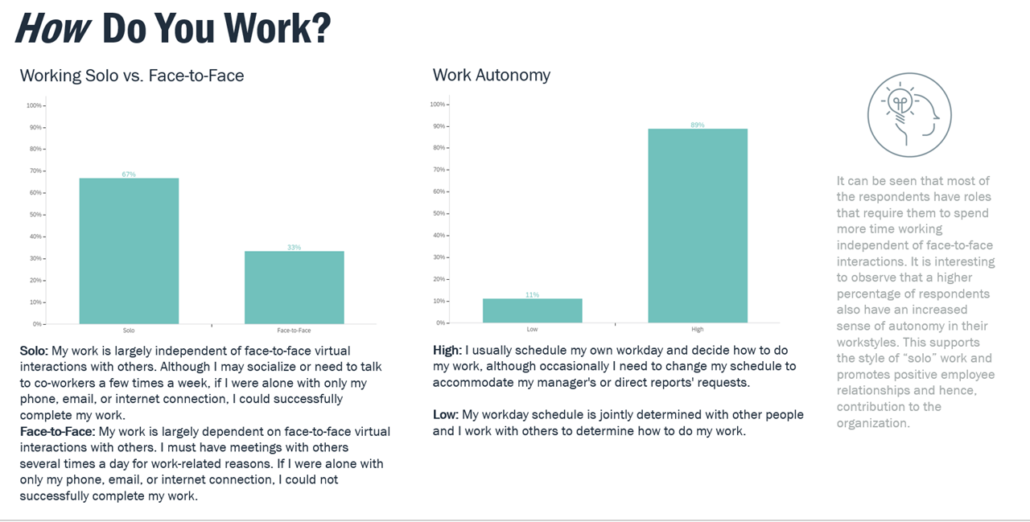Haworth – Returning to the Workplace: A Londoner’s Story of Adaptation
A city that is home to nearly nine million people, London has been devoid of its usual life now for nearly seven months.
Over this period, all private healthcare has been nationalized in order to accommodate for the increasing number of COVID-19 cases. All trains have been nationalized to prevent the companies running them from collapsing. The UK has rolled out programs requiring the government to pay 80% of the wages furloughed workers have lost due to the pandemic. And during the height of the stay-at-home mandates, London edged closer and closer to a city of post-apocalyptic scene—with the Theatre district closed, Oxford circus quiet, pubs running dry, and public gatherings banned; social life came to a halt.
Offices were doing no better; work life amounted to being holed in a corner of your kitchen, a makeshift workspace, or—if you were lucky—an actual home office. What did it mean for a Gen Z-er like me to be doing business during isolation?
A Londoner’s Experience
A regular work-from-home day accommodated for long spans of virtual collaboration and trying to get more work done amidst the various distractions of being in a home of four friends. No one accounted for the lack of motivation, concentration, and perhaps lack of dependable technology available. Even though I could be driven and find it in me to consistently schedule a work regime devoid of any flaws, I felt the loneliness of being away from my work team.
Not many of us were used to managing communication virtually on a day-to-day basis. Mutually overcoming this hurdle also consumed energy, which—for me—added to the weight of my workload and was no match for the rich face-to-face communication I had with my colleagues pre-pandemic. The consistently budding “collective anxiety” was growing and displacing not just my state of mind, but of my entire flat—me and my three flatmates.
To fight the situation, we took advantage of the once-daily outdoor exercise sessions the government allowed and started a new routine together. We cooked together, watched films together, and even decorated face masks to encourage ourselves to adapt positively to the situation. As restrictions began to lift, we were enthused to go out, but apprehensive to use the public transport. So, we all got bicycles to ride for exercise.
It is true that humans can adapt and, in some ways, the pandemic has been life-changing. It has made me more aware and my lifestyle more sustainable. It was a good feeling. Although, the thought of going back inside and spending over eight hours working alone at the uncomfortable kitchen counter made me feel discouraged to start each Monday.
The situation eventually started to ease and people began going back to the workplace. However, with the onslaught of a second wave, every decision seems to be on hold, and a state of anxiety continues to envelop work and life. Meanwhile, I decided to cycle everywhere, and this means never having to worry about the schedules of the public transport—and whether or not it is safe. The streets of London are still deserted and not anywhere near full capacity, making it rather easy to cycle and not be threatened by the motorway.
But, this also means that not everyone has come back to the workplace. Given physical distancing and occupancy guidelines, not everyone can be accommodated at the same time anymore. So, I try distantly enjoying work with some of my colleagues and miss the others. My favorite nearby sushi joint hasn’t opened yet, and lunch and coffee breaks are far less enjoyable. But, I’m excited all the same to come in and find myself in an atmosphere that supports my abilities to concentrate and be productive. I hope eventually the office will soon be able to support us socially just as before.
Moving Forward – Working from Anywhere
The work environment is our collective responsibility, and during uncertain times like these, it is our duty to understand and design a safe and warm work community for the future. The Research teams are trying to understand the implications and effects of the pandemic on people and their work.
Understanding how we can sustain ourselves when away from the physical space of work will help us build a healthy trust-based environment for the workplace of tomorrow. While it is easier to settle for familiar solutions during regular workdays, a crisis demands us to invent and innovate.
It is perhaps vital that organizations take this opportunity to explore improved ways of working, which will make the workplace of tomorrow more resilient and flexible to accommodate for any difficult situations that arise—even a pandemic—to be handled smoothly. Knowing that the workplace—be it office, home, or a third place—is an expression of an organization’s culture is key.
Going beyond surface impressions can be the difference between moving your culture forward or holding it back. How satisfied are your workers with their current environment? Does the situation hinder their performance? Do your employees feel supported? Is there room for improvement? The workspace has an indirect, yet clear, effect on performance. Because of this, a deeper understanding of employee needs and perceptions is essential.
Our LENS survey helps us understand workstyles, work environment, and work culture. During times of change, such as our current situation, the survey leverages research and helps us explore the various ways people work and how they have adapted to suit their work-from-home needs. All this research and understanding of the current situation will hopefully feed into our needs of tomorrow. What will the future of work be—Office? Home? Third place? All of the above? It is relevant for organizations to understand the needs of their employees before moving into a new form of workplace. Perhaps our future office is not a place we dread to go into every Monday morning, but one where we look forward to collaborating with colleagues every Tuesday afternoon. Taking this opportunity to finally balance work and life would be a silver lining in this pandemic.
To Read more Click Here
Humans Adapt, Create, and Innovate
To be creative in various ways, we communicate while being physically away, to allow for humor, show support for each other; innovate in the ways universities and organizations around the globe are collaborating to develop a vaccine, ways in which supermarkets have senior-only hours. We are leveraging technology to be one community, and it is a heart-warming feat of humanity in this time. Innovation and creativity are empowering forces of our survival. Just as Isaac Newton worked to grasp at initial concepts of gravity during his quarantine from the Great Plague of London—which led to a magnificent scientific discovery—it is an opportunity for us to reinvent and refresh our work environment to be more resilient and hope for a magnificent future for work.






